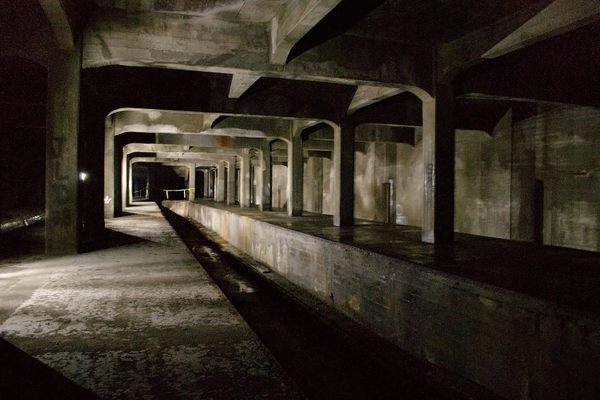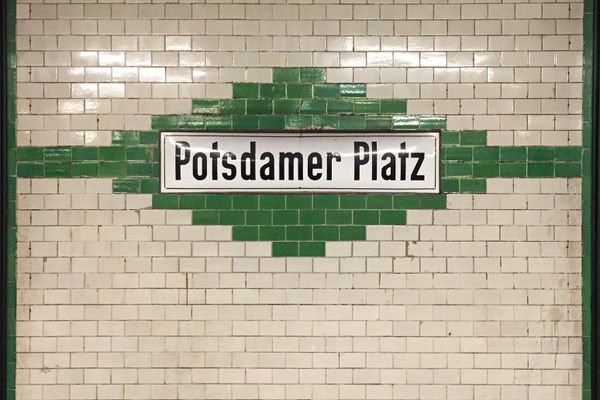The Battle between Boston and New York to Take Transportation Underground
New York subway construction (1908) (via New York Public Library)
At the end of the 19th century, two of the major cities of the United States were pushing their ambitious building underground. Both New York City and Boston had grown beyond their horse-drawn transportation, and had the engineering and vision for an ambitious new infrastructure. The Race Underground: Boston, New York, and the Incredible Rivalry that Built America’s First Subway by Doug Most, a Boston Globe editor, was published this month, and the book chronicles the competing building projects through their characters and collaborations.
Most answered a few questions about The Race Underground:
Your book focuses on the race between Boston and New York City to build the first subway in the United States, and the personalities behind each project. How did you come across this story?
My initial idea was to focus just on the Boston subway, knowing it was the first subway in America and that the great story behind its design and construction had never been told in full. But when I dug into the story, pardon the pun, I discovered that New York had been wrestling with the same big issues and fears and problems as Boston at the same time, in the 1880s and 1890s. I discovered characters who overlapped in both cities, most famously two brothers, Henry and William Whitney, one from each city, who played critical roles in their subways. That made the book a natural, the story of two cities, not one.
Why did both cities end up focusing on subway infrastructure at the same time, and how did it turn into a rivalry?
Both cities had been grappling with improving their transit systems for decades, but it was a storm that proved pivotal. The Blizzard of 1888 crippled the Northeast for weeks and left cities paralyzed with no way for people to move about and for goods to get in and out. That storm triggered officials to look for ways to improve their systems, and moving them underground was the natural solution.
It was a friendly rivalry. Both cities paid very close attention to each other, especially the brothers Whitney, but when Boston’s opened in 1897, New Yorkers expressed genuine disappointment and a little surprise that Boston had beaten them to the punch.
With years of research behind the book, what was the most surprising discovery for you?
It would have to be the Whitney brothers. Henry Whitney’s role in Boston I knew about, but William Whitney’s role in New York was not at all widely known, because some of the revelations came out after his death, in a courtroom. Reading about his role, knowing that his brother in Boston played a role in Boston’s subway, was a great find and fascinating moment for me. I knew as a writer it was a dream discovery.
Subway workers in New York (between 1910 and 1915) (via Library of Congress)
What were some of the challenges in constructing the two subway systems?
They used a cut and cover method mostly — cut a trench, lay the tracks and cover it. That was seen as the easiest, cleanest, safest method. But in New York, certain parts had to be dug deeper, and dynamite was needed. That was a new tool back then and workers were very inexperienced with the risks that came with explosions underground.
In Boston, simply digging a huge tunnel with picks, shovels, axes and horses and carts pulling out the dirt was a great challenge. They had none of great machines and devices we have today. It was so rudimentary and basic, and yet it was an incredibly efficient operation.
Have you spent much time exploring the underground yourself?
A little bit. I have been down in a few tunnels under Boston, but hope to go see more soon. I have an invitation I am eager to accept to go spelunking in Boston’s tunnels.
Now that we’re many decades from the start of both subways, can you say which you think was more successful in the end?
Well clearly New York really expanded much faster and farther with its subway. Boston was slow in doing that and did not go nearly as far. Boston eventually embraced more elevated rails before moving those underground. But New York kept expanding its subway, and is still expanding to this day, with the giant 2nd Avenue Subway Project. A great nugget is that the current day project is being designed and built by Parsons Brinckerhoff, the same firm founded by William Parsons that designed and built New York’s original subway back in 1904. The past is present.
Photographs of subway construction in New York (1902) (via New York Public Library)
Subway construction in New York (1900) (via New York Public Library)
courtesy Doug Most
courtesy Doug Most
courtesy Doug Most
Construction of the Canal Street Incline in Boston (1908) (via Wikimedia)
Construction of the Public Garden Portal in Boston (1897) (via Wikimedia)
The construction of the Pleasant Street Portal in Boston (1896) (via Wikimedia)
Construction of the Boylston Street station in Boston (1896) (via Wikimedia)
Construction on the Boston Boylston station (1896) (via Wikimedia)
Construction of a New York subway station (between 1901 and 1905) (via New York Public Library)
New York subway station construction (between 1901 and 1905) (via New York Public Library)
Subway construction workers in New York (between 1901 and 1905) (via New York Public Library)
Construction of a subway tunnel wall in New York (between 1901 and 1905) (via New York Public Library)
The Race Underground: Boston, New York, and the Incredible Rivalry that Built America’s First Subway by Doug Most is available from St. Martin’s Press.










Follow us on Twitter to get the latest on the world's hidden wonders.
Like us on Facebook to get the latest on the world's hidden wonders.
Follow us on Twitter Like us on Facebook